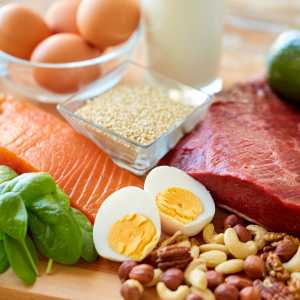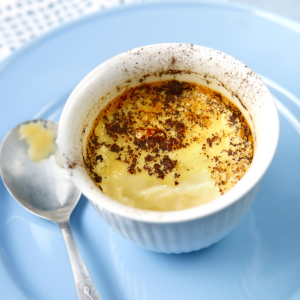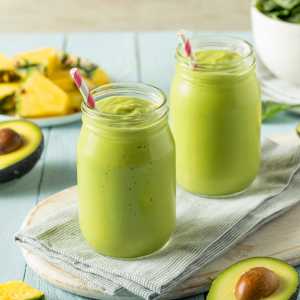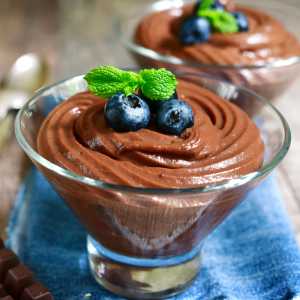Adequate weight gain is a vital marker of a child’s growth and development. Failure to thrive concerns are not uncommon for parents of underweight babies and toddlers. This article delves into healthy weight gain for babies (at least 6 months old and eating solids) and toddlers. It also covers nutrient and calorie dense foods and how to fortify meals for extra calories with some of my best mom tips, tricks, and recipes sprinkled throughout.
What Is Considered Poor Weight Gain, And Why Does It Matter?
Poor weight gain in a baby or toddler is characterized by a slower rate of growth when compared to established growth curves or inadequate weight gain for their age and developmental stage.
 About 25% of infants will shift to a lower growth percentile in the first two years of life and then follow that percentile’s growth curve as they grow; this should not be diagnosed as failure to thrive (1). Healthy weight gain is a crucial indicator of a child’s overall well-being and proper development, and therefore should be tracked, especially if there is concern about a child’s weight.
About 25% of infants will shift to a lower growth percentile in the first two years of life and then follow that percentile’s growth curve as they grow; this should not be diagnosed as failure to thrive (1). Healthy weight gain is a crucial indicator of a child’s overall well-being and proper development, and therefore should be tracked, especially if there is concern about a child’s weight.
During the early years of life, growth and weight gain are signs of appropriate nutrition and a strong foundation for physical and cognitive growth. Poor weight gain, or a sudden slow in weight gain that causes a child to drop off their established growth curve, may be indicative of various underlying issues, such as insufficient caloric intake, feeding difficulties, underlying medical conditions, or developmental concerns.
Addressing poor weight gain is essential to ensure that a child is receiving the necessary nutrients and energy for optimal growth, development, and long-term health. Regular growth monitoring is an important part of caring for babies and toddlers as it allows for prompt discovery of issues.
Failure To Thrive & When To Seek Medical Help
“Failure to thrive” is a term used to describe inadequate growth or weight gain in babies and young children. The causes of failure to thrive can be grouped into three main categories.
- Inadequate caloric intake can result from feeding difficulties or aversions.
- Increased caloric needs might arise due to medical conditions such as congenital heart disease or metabolic disorders, requiring higher energy consumption for growth.
- Poor nutrient absorption, often due to gastrointestinal issues or malabsorption disorders, can hinder the body’s ability to utilize nutrients effectively.
Slow or stagnant weight gain, dropping off an established growth curve, lack of interest in feeding, decreased activity, or developmental delays are all reasons that parents should seek expert help when it comes to low weight gain in children.
According to the American Academy of Family Physicians, all children with failure to thrive need additional calories for catch-up growth, which is typically 150% of the daily caloric requirement for their expected (not actual) weight (1).
The Significance of Nutrient and Calorie Density in Foods
If a meal is nutrient dense, it has a high amount of nutrients in relation to its weight. If a food is calorie dense, a serving packs a large amount of calories. For example, a tablespoon of olive oil (13 grams) packs the caloric equivalent of two whole oranges (280 grams), but the orange has more nutrients per gram than the olive oil.
 When it comes to increasing weight gain in babies and toddlers, we are looking to strike a balance between nutrient and calorie density. Here’s why: Imagine you wanted your child to gain weight, so you fed them multiple Twinkies as snacks each day. The Twinkie is not a nutrient dense food, but it is calorie dense. This Twinkie-rich diet may allow the child to gain weight purely based on the amount of extra calories consumed, but it would not be healthy and the child would likely end up with nutrient imbalances, among other concerns. To promote healthy weight gain, we must look for foods that are both nutrient dense and calorie dense.
When it comes to increasing weight gain in babies and toddlers, we are looking to strike a balance between nutrient and calorie density. Here’s why: Imagine you wanted your child to gain weight, so you fed them multiple Twinkies as snacks each day. The Twinkie is not a nutrient dense food, but it is calorie dense. This Twinkie-rich diet may allow the child to gain weight purely based on the amount of extra calories consumed, but it would not be healthy and the child would likely end up with nutrient imbalances, among other concerns. To promote healthy weight gain, we must look for foods that are both nutrient dense and calorie dense.
For more on what makes up a healthy diet, see this article: The Basics Of Anti-Inflammatory Eating For The Whole Family – Dr. Green Mom.
Nutrient & Calorie Dense Foods
- Avocado: Rich in healthy fats and calories, avocados are a great source of monounsaturated fats, which are essential for brain development and overall growth.
- Full Fat Dairy: High in protein, calcium, and fats, as well as essential nutrients. Try to source grass fed and less processed versions, such as VAT pasteurized, non-homogenized, or well sourced raw when possible.
- Nuts and Nut Butters: Excellent sources of healthy fats and protein. Do not give to a child with a known nut allergy.
- Eggs: A complete protein source that provides important vitamins like B12 and choline, which are vital for brain development.
- Fatty Fish: Rich in omega-3 fatty acids, which support brain health and overall growth. Good sources include salmon, sardines, and mackerel.
- Coconut Oil: Provides medium-chain triglycerides and increases calorie content when added to foods.
- Quinoa: High in protein and whole grain complex carbohydrates, providing sustained energy for growing bodies.
- Sweet Potatoes: Packed with vitamins, fiber, and healthy calories.
- Bananas: Easily digestible and calorie-dense.
- Lentils and Legumes: Plant-based protein rich in fiber, iron, and other important minerals for growth.
- Dried Fruits: High in fiber and antioxidants; a toddler favorite!
- Coconut Manna: A concentrated source of healthy fats and calories made from pureed coconut flesh.
Supercharging Common Foods
As parents of young children know, toddlers want what they want, and they want it now! Be that a certain colored cup or a favorite snack, they have opinions and are not afraid to voice them. A savvy way to sneak extra calories into your child’s diet is to ‘supercharge’ or ‘fortify’ their favorite foods by mixing in undetectable amounts of nutrient & calorie dense foods. Your child won’t be able to taste the difference!
Food Fortifiers
Fortifiers are nutrient & calorie dense foods with mild flavors that can easily be added to other foods to increase the total number of nutrients and calories. These simple adaptations can make a significant difference in your child’s daily caloric intake. Here are a few of my favorite fortifiers.
Egg Yolk: This is easy to mix into all kinds of foods. For example, I sneak an egg yolk into my kids pasta sauce just before serving.* This trick adds undetectable calories, protein, and nutrients to this family favorite food. I have also been known to mix a pasture-raised egg yolk into my kids hot cocoa, yogurt, oatmeal (it makes it extra creamy), and smoothies.
*To avoid curdling the yolk, be sure to temper it by slowly adding a hot liquid, rather than all at once, and whisking constantly and rapidly until the mixture is smooth.
Cottage Cheese: This works well for calorie & nutrient dense dips! Mix some organic ranch seasoning into a cup of cottage cheese and blend it for an easy veggie dip. Or, blend cottage cheese with some vanilla extract and maple syrup to make a dip for fruit or to serve with pancakes.
Coconut Oil: Coconut oil is an easy way to fortify foods. Mix a teaspoon into smoothies, add a spoonful to oatmeal, and use it abundantly in your cooking.
Avoiding Empty Snacks
In the same way we seek to prioritize nutrient and calorie dense foods, parents who are looking to help their child gain healthy weight should also look to reduce ‘empty’ snacks, such as puffs and teething crackers. Empty snacks do not pack many calories per gram and are not dense in nutrients. Eating these snacks frequently may decrease a child’s hunger, which can lead to the underconsumption of nutrient and calorie dense foods that we do want them to eat. If your child wants a teething cracker, fortify it by spreading a spoonful of coconut manna, nut butter, or avocado on top.
Baby & Toddler Friendly Supplements
For little ones who are picky eaters, supplements may be a good way to increase nutrient intake while working on increasing caloric intake. Desiccated beef liver makes a great addition to baby food by adding nutrients and protein. Cod liver oil is another food-based supplement easily added to foods that supplies essential vitamins and healthy fats.
To learn more about adding supplements to baby food, see: Beef Liver Capsules Are A Great First Food For Babies – Dr. Green Mom.
A Note on PediaSure
PediaSure is a well known pediatric nutritional supplement that is often the first line of treatment for insufficient weight gain in toddlers and young kids. PediaSure does contain calorie dense ingredients; however, most are inflammatory and nutrient deficient. For example, the first five ingredients listed on the product label are: Corn Syrup, Sugar, Blend of Vegetable Oils (Canola, High Oleic Sunflower, Sunflower), Milk Protein Concentrate, and Corn Maltodextrin. It is also fortified with a multitude of synthetic vitamins, which are usually less bioavailable than naturally occurring vitamins and lack the important cofactors found in nutrient dense foods, like those listed above.
Though PediaSure is not something I prescribe in my practice, nutrient-dense shakes are a great concept. For most patients, I recommend a homemade calorie & nutrient dense shake like the one below. If a store bought meal replacement shake is needed, I recommend this one from Kate Farms (2).
Calorie & Nutrient Dense Recipes
There are many delicious recipes that are both calorie and nutrient dense as well as kid approved! A few of my favorites are included below. Some of the recipes are sweet, so I recommend offering those after a nutrient dense meal as a ‘top off.’
Dr. Green Mom’s Homemade Nutrition Shake For Kids
Please note this is not a meal replacement shake but rather a tasty snack that is calorie & nutrient dense!
🍴 Serves: 2
Ingredients
- 1.5 cups liquid – I like to use unseasoned chicken bone broth, (raw) whole milk, whole milk kefir, full fat coconut milk, or breast milk.
- ½ banana
- ½ avocado
- 2 Tbsp. nut butter of choice
- 1 Tbsp. coconut oil
- 1 egg yolk (raw or hard boiled)
- 1 Tbsp. raw cacao
- Optional: A small amount of maple syrup and/or vanilla extract for flavor
Directions
- Place all ingredients in a high powered blender and mix until smooth.
Have leftovers? If no raw ingredients, breast milk, or formula were used, this can last a day in the fridge. Another option is to pour the remaining mixture into a popsicle mold and freeze.
 Bone Marrow Custard
Bone Marrow Custard
This yummy recipe from the Weston A Price Foundation is exceptionally nutrient dense and packs a lot of calories.
⏲️ Prep Time
2.5 hrs
🍴 Serves
6
Ingredients
- 5 lbs. beef marrow bones* (sliced)
- 1 cup cream
- 3 egg yolks
- 3 whole eggs
- 1 Tbsp. vanilla extract
- ½ tsp. sea salt
- 1 Tbsp. cinnamon, or to taste
- Optional: 2 tsp. honey or maple syrup
*Beef marrow bones can be found at natural grocery stores, online, or purchased from a local farmer.
Directions
- Preheat oven to 450°F.
- Place beef marrow bones in a glass baking dish and roast for 15 minutes or until fragrant.
- Remove bones from the oven and reduce its temperature to 350°F.
- Let bones cool before scraping out bone marrow with a spoon or butter knife. Transfer marrow in a small dish and skim off any excess oil.
- In a blender, combine all ingredients and blend until smooth.
- Divide evenly into 6 small custard cups and place in a water bath (hot water should reach about halfway up the custard cups).
- Bake for 30-35 minutes, or until set in the center. Turn off the oven and open the door, allowing the water bath and custard to cool.
- Sprinkle with cinnamon to garnish.
Hard Boiled Egg Chocolate Pudding
This recipe may seem odd at first, but it’s delicious and a great way to get more protein and calories into a child who is a picky eater or has a decreased appetite from illness. Surprisingly, you really can’t taste the eggs! I like to refrigerate mine overnight before consuming. Adapted from Maria Emmerich’s recipe (4).
⏲️ Prep Time
Refrigerate overnight
🍴 Serves
Varies
Ingredients
- 10 peeled hard boiled eggs
- 5 oz. whole milk
- 5 oz. cream
- ¼ cup cocoa powder
- ½ cup maple syrup
- 1 Tbsp. vanilla extract
- ½ tsp. sea salt
- 1 Tbsp. cinnamon, or to taste
Directions
1. Place all ingredients in a high powered blender and blend until smooth.
Summary
Weight gain, or lack thereof, can be used to evaluate the general health of children. When children fail to gain weight as expected, parents should speak with a physician to rule out any underlying conditions. In the absence of underlying conditions, parents may be instructed to help their babies or toddlers gain weight by increasing their caloric intake. In such cases, it is imperative to offer children foods that are both calorie and nutrient dense to encourage healthy weight gain.
References:
- Krugman, S. D., & Dubowitz, H. (2003). Failure to thrive. American family physician, 68(5), 879–884
- Pediatric Standard 1.2 | Kate Farms. (n.d.). Shop.katefarms.com. https://shop.katefarms.com/products/pediatric-standard-1-2
- Zahratka, S. (2021, August 4). Bone Marrow Custard. The Weston A. Price Foundation. https://www.westonaprice.org/bone-marrow-custard/
- Emmerich, M. (2020, April 23). Hard Boiled Egg Pudding. Maria Mind Body Health. https://mariamindbodyhealth.com/hard-boiled-egg-pudding/









